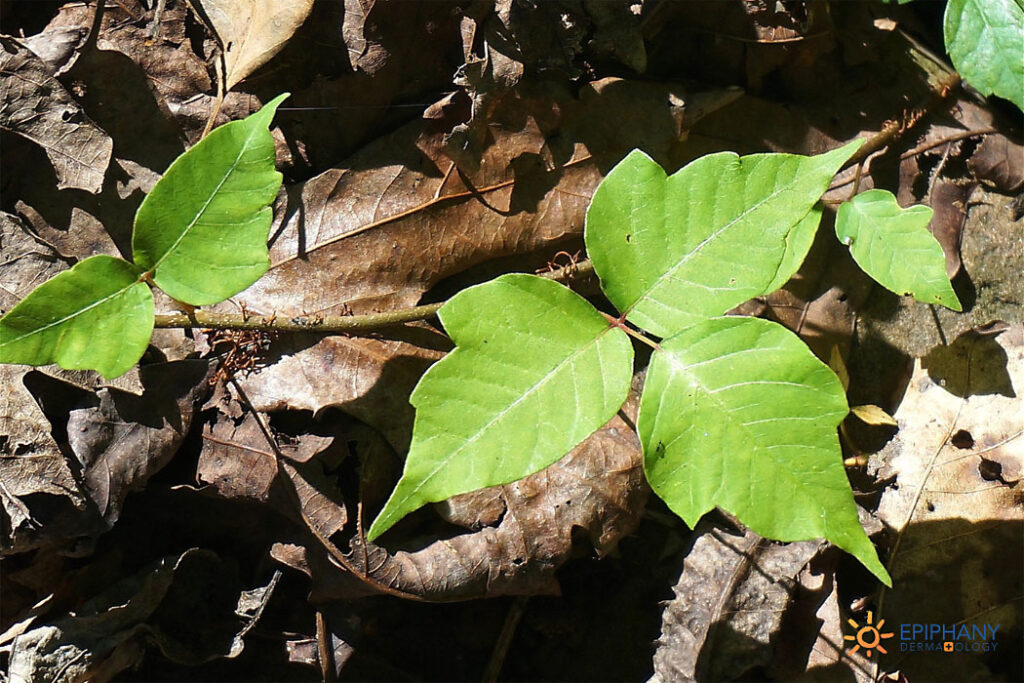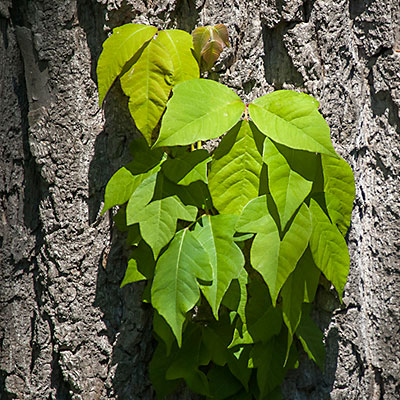
At a recent bachelor party, which involved (among other entertainments) a possibly illegal fireworks display, a disoriented groom-to-be stumbled in the woods while fleeing a vehicle that he and his buddies mistook for a police cruiser. Flopping forward onto underbrush and brambles, the groom broke his fall with his wrists. The next morning, throbbing pain in his forearms necessitated an emergency-room visit and the application of air casts that strained the sleeves of the suit he wore during the wedding and reception. Worse yet, he developed—over two important thirds of his body—scalding poison oak. The newlyweds had to delay their honeymoon—for three months!
What’s the lesson here? Men shouldn’t consume alcohol shortly before their trip to the altar?
No, the lesson is that poisonous plants are growing far fiercer. A few years ago, scientists noticed that toxic plants were becoming denser and more prolific. Poison oak, ivy, and sumac produce a noxious oil called urushiol. Research revealed that the urushiol in today’s plants is more virulent than the urushiol produced by plants that grew 10 years ago. What’s causing these awful changes? We are! Scientists now know that poisonous plants thrive on carbon dioxide. By continually increasing pollution of the earth’s atmosphere, we’re encouraging plants to attack us oftener and more severely.

Besides becoming greener, what can we do? First, learn to recognize vicious vegetation. This is harder than it sounds. Not all varieties of poison ivy have three leaves, for example. Sites like the Centers for Disease Control and Prevention (CDC) provide photos and reliable guidelines. Books such as A Field Guide to Poison Ivy, Poison Oak and Poison Sumac: Prevention and Remedies (Falcon) by Susan Carol Hauser and William L. Epstein are useful, too.
Also, be aware that skin-to-plant contact isn’t the only route to oozing, itchy blisters. (This allergic reaction is called contact dermatitis. Only 15 percent of people are truly not allergic to toxic plants. Many people smugly believe they’re immune but develop painful reactions after repeated exposures.) Merely touching a trowel, your dog, or gardening gloves can produce contact dermatitis if these objects have urushiol on them. Urushiol retains its toxicity for up to five years! Never burn poison ivy, oak, or sumac plants. Particles in the smoke can cause severe lung irritation that will require immediate medical intervention. On a positive note: contact dermatitis doesn’t spread from touching oozing blisters.
If you can’t avoid toxic plants, don long sleeves, long pants, boots, and gloves. According to the CDC, lotions containing bentoquatum may provide protection prior to contact. Wash urushiol-exposed clothing separately in hot water with detergent. Wear disposable gloves while you clean trowels and other tools with rubbing alcohol or soap and lots of water. You can detoxify your skin with rubbing alcohol or dishwashing soap and lots of water, too, but only if you act quickly after exposure.
According to the Mayo Clinic’s website, rashes usually last one to three weeks, and over-the-counter corticosteroid creams, calamine lotion, creams containing menthol, and oral antihistamines may relieve symptoms. Applying cool, wet compresses for 15 to 30 minutes several times a day or taking cool oatmeal baths may help, too.
